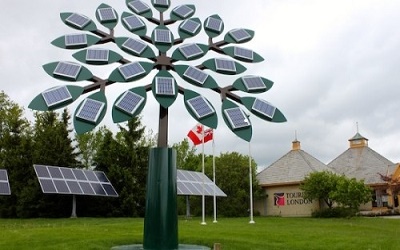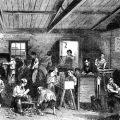PTE考生目前最大的问题之一就是练习题缺乏。除了有限的基本官方书(PLUS,Testbuilder, OG)之外就没有题了。很多英语基础不是很扎实的同学很难找到练习材料。悉尼文波雅思PTE培训学校专门为澳洲,尤其是悉尼、墨尔本的PTE考生准备了适合PTE听力阅读练习的科学60秒。各位PTE同学可以练习PTE听力中的summarise spoken text和PTE口语中的retell lecture,PTE听力口语-科学60秒-Frosty Moss练习记笔记技巧和复述。废话少说,下面开始:
Tree Electricity Runs Nano-Gadget
A report in the journal IEEE Transactions on Nanotechnology shows that maple trees generate a small, but measureable amounts of electricity, which can power tiny devices. Karen Hopkin reports
If scientists have their way, we may someday be tapping maples—not for pancake fixin’s, but for power. Because researchers from the University of Washington in Seattle have found there’s enough electricity flowing in trees to run an electronic circuit.
If you’ve ever made a potato battery, you know that plant material can generate current. But the energy in trees is something else entirely. The potato experiment uses electrodes of two different metals to set up a charge difference that gets local electrons flowing.
But in the current study, researchers use electrodes made of the same material. Sticking one electrode into a tree and another in the soil, they found that big leaf maples generate a steady voltage of up to a few hundred millivolts. That’s way less than the volt-and-a-half provided by a standard AA battery. So the scientists designed a gadget so small, with parts just 130 nanometers in size, that it can run on tree power alone. Their results appear in the journal IEEE Transactions on Nanotechnology.
If you’re nuts for renewable energy, you probably can’t get much greener than a forest full of electrici-tree.
—Karen Hopkin





